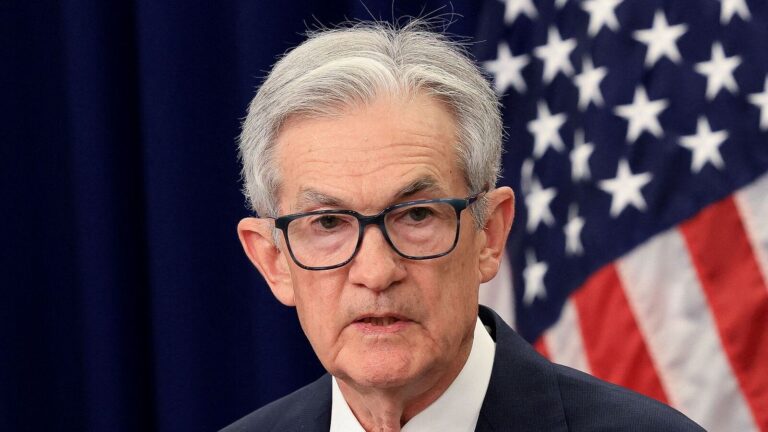Amid the buzz around tariff negotiations and quarterly earnings, investor attention has now shifted to the US Federal Open Market Committee (FOMC) meeting scheduled for July 29–30, even as markets widely expect interest rates to remain unchanged.
US Federal Reserve Chair Jerome Powell is expected to repeat what he has stated in several recent policy meetings — that the Fed will respond to incoming data and the evolving economic situation.
The US central bank last cut interest rates on December 18, 2024, by 25 basis points, bringing the federal funds rate to a range of 4.25 per cent to 4.50 per cent. Since then, the Fed has maintained a pause despite strong pressure from President Donald Trump to cut rates further.
Fed’s focus is on tariff-led uncertainty
Most Fed officials think that the real impact of Trump’s tariffs will be seen in months to come, and an early rate cut will damage the Fed’s efforts to bring inflation down.
However, in the recent past, the US has finalised trade agreements with several major economies, including Japan and the European Union. Tariff negotiations are ongoing with China and India. It will be interesting to see how the Fed factors these developments into its policy assessment.
In its last policy meeting in June, the Fed revised its growth and inflation forecast, flagging an increased risk of inflation due to Trump’s tariffs.
The Fed projected GDP growth of 1.4 per cent in 2025, down 0.3 per cent from the March meeting. By the end of the year, it sees unemployment rising to 4.5 per cent and inflation at 3 per cent, well above the current level.
The US economy has exhibited strong resilience so far. However, the real impact of the tariffs is not yet visible, as Trump extended the tariff deadline for many countries to August 1.
Moreover, some experts highlighted that some sort of pre-selling and inventory stocking may have occurred earlier in the cycle, and that inventory is still being consumed, which is keeping the US economy in good shape.
“Contrary to earlier expectations, US economic data remains strong. One possible reason is that pre-selling and inventory stocking may have occurred earlier in the cycle, and that inventory is still being consumed. As a result, the anticipated effects of higher inflation and slowing growth have not yet materialised,” said Pankaj Pandey, the head of research at ICICI Securities.
Can rate cut signals boost market sentiment?
Experts say the markets have largely factored in a pause this time and a rate cut in September. So, the market may not see any significant movement due to the Fed’s policy outcome.
However, a dovish Fed may weaken the US dollar, which may trigger some foreign capital inflow to emerging markets like India.
“The US Federal Reserve is expected to pause rate hikes and will likely avoid rushing into cuts. The earliest possible timeline for rate cuts could be September. The upcoming July policy meeting may turn out to be a non-event for the markets, as a pause has already been largely priced in,” said VK Vijayakumar, Chief Investment Strategist, Geojit Investments.
G Chokkalingam, the founder and head of research at Equinomics Research Private Limited, has a similar view.
“The Fed policy will not have any impact on the Indian market because a pause is largely discounted and the Fed may not give any clear signals on rate cuts,” said Chokkalingam.
Chokkalingam underscored that the Fed will wait for a few months to see how Trump’s tariffs affect the inflation trajectory. Despite trade deals, tariff rates remain relatively high on imports to the US. This means the risk of inflation rising again is real.
At this juncture, the biggest trigger for the market would be an India–US trade deal. The agreement is being delayed because India is reluctant to open its markets to US agricultural, dairy, and genetically modified (GM) products, which could negatively impact the livelihoods of its farmers.
Read all market-related news here
Read more stories by Nishant Kumar
Disclaimer: This story is for educational purposes only. The views and recommendations expressed are those of individual analysts or broking firms, not Mint. We advise investors to consult with certified experts before making any investment decisions, as market conditions can change rapidly and circumstances may vary.
